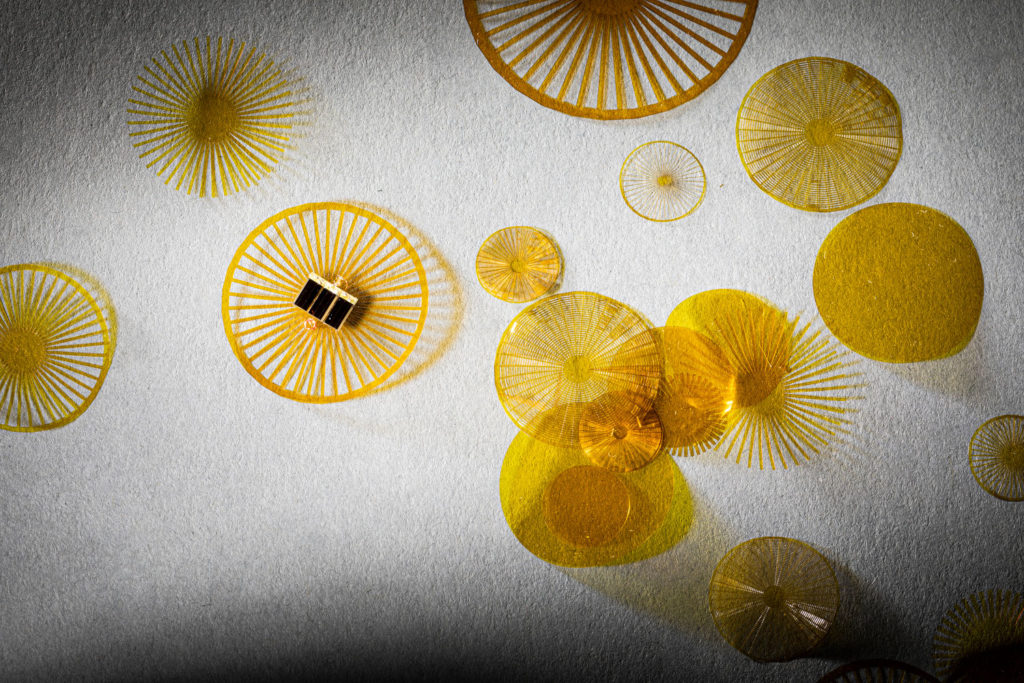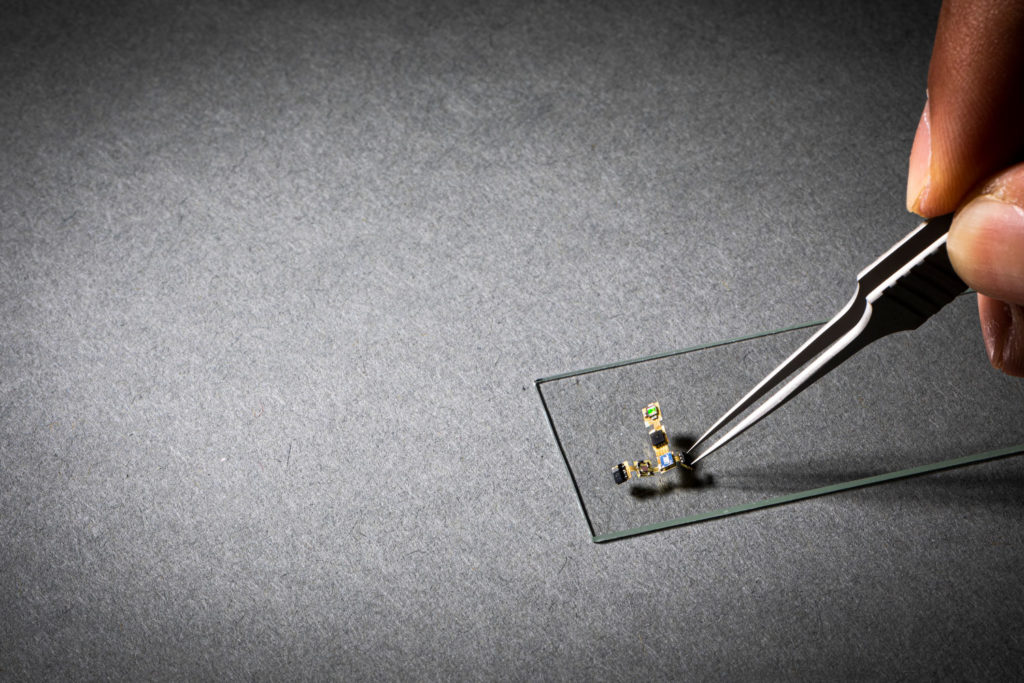As the climate crisis continues to escalate, it is useful to track changes in temperature, humidity, and other environmental condition over a wide area. Wireless sensors can monitor these factors and can provide unique insights for a variety of applications, including digital agriculture and monitoring climate change. However, it is currently time-consuming and expensive to physically place hundreds of sensors across a large area.
Now, researchers at the University of Washington have developed a tiny sensor-carrying device that can be blown by the wind as it tumbles toward the ground. The design is inspired by the way dandelions spread their seeds with the wind. Because the devices have electronics on board, it’s challenging to make the whole system as light as an actual dandelion seed.
The team tested 75 designs based on dandelion seeds to determine what would lead to the smallest terminal velocity or the maximum speed a device would have as it fell through the air.

The sensor-carrying device is about 30 times as heavy as a 1-milligram dandelion seed but can still travel up to 100 meters in a moderate breeze, about the length of a football field, from where it was released by a drone. The device can hold at least four sensors. Once on the ground, it uses tiny solar panels to power its onboard electronics and can share sensor data up to 60 meters away. A small onboard capacitor allows energy to be stored overnight or on cloudy days.
“We show that you can use off-the-shelf components to create tiny things. Our prototype suggests that you could use a drone to release thousands of these devices in a single drop. They’ll all be carried by the wind a little differently, and basically, you can create a 1,000-device network with this one drop,” said senior author Shyam Gollakota, a UW professor in the Paul G. Allen School of Computer Science & Engineering. “This is amazing and transformational for the field of deploying sensors because right now, it could take months to manually deploy this many sensors.”

The design sees the devices land with the solar panels facing upright 95% of the time, and their shape and structure allow them to flip over and fall in a consistently upright orientation similar to a dandelion seed.
“This is mimicking biology, where variation is actually a feature, rather than a bug,” said co-author Thomas Daniel, a UW professor of biology. “Plants can’t guarantee that where they grew up this year is going to be good next year, so they have some seeds that can travel farther away to hedge their bets.”
Thanks to the battery-free design, there is nothing on this device that will run out of juice, which means it will keep going until it physically breaks down. The team already has some ideas to improve this initial design and make them more biodegradable to avoid scattering electronics waste across the ecosystem of interest.
“This is just the first step, which is why it’s so exciting,” said lead author of the paper Vikram Iyer, a UW assistant professor in the Allen School. “There are so many other directions we can take now – such as developing larger-scale deployments, creating devices that can change shape as they fall, or even adding some more mobility so that the devices can move around once they are on the ground to get closer to an area we’re curious about.”
Dandelion seed-inspired sensors track signs of climate change
Source: Global Access News

No comments:
Post a Comment